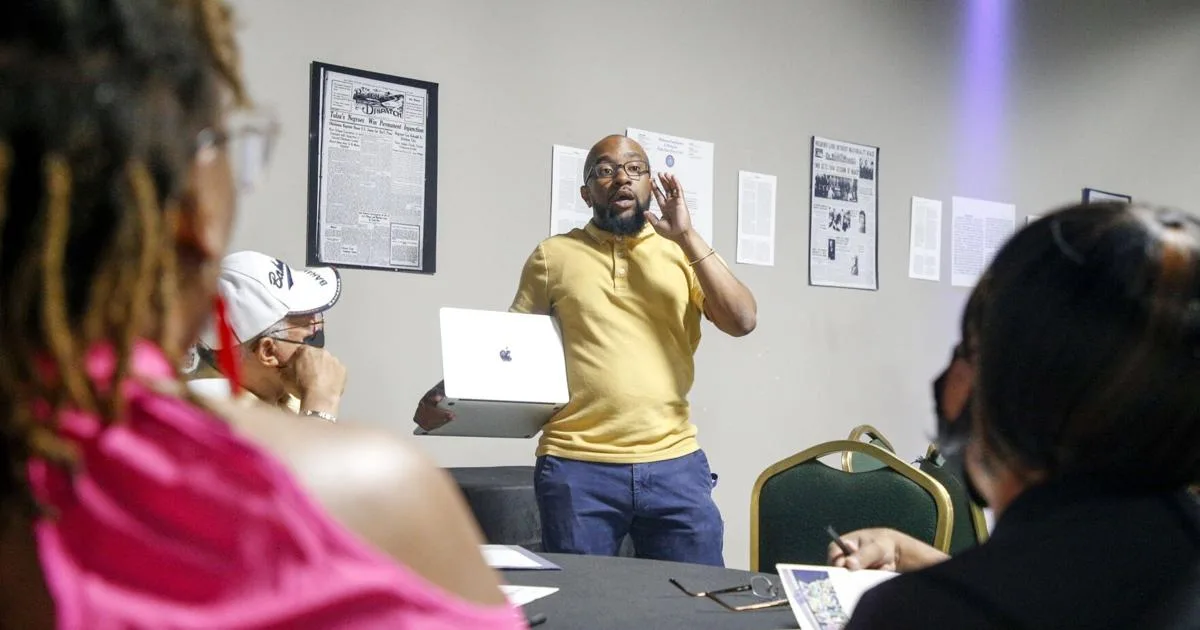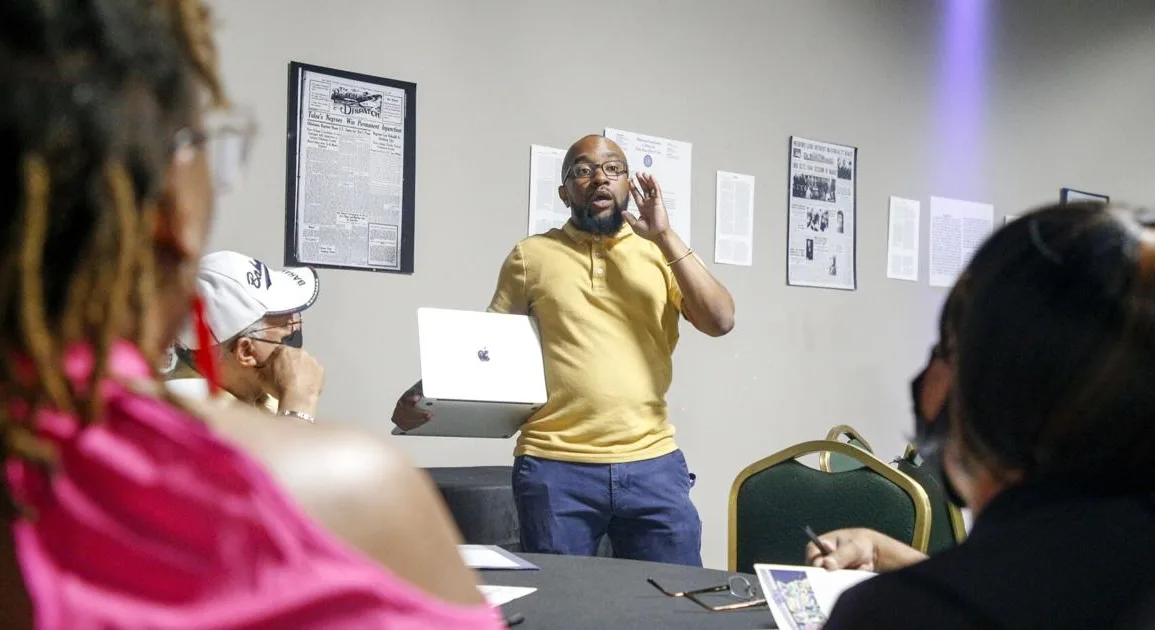
A report detailing Tulsans’ ideas regarding possible reparations and repairs for those harmed by the 1921 Tulsa Race Massacre and their descendants is expected to be presented to city councilors next month.
“We expect to present the findings the first week of November, pending council availability,” said Greg Robinson, project manager for the Beyond Apology program.
The framework for community-led discussions was established after city councilors and Mayor G.T. Bynum approved in June 2021 a nonbinding resolution pledging to make “tangible amends” for the harms caused by the Race Massacre.
People are also reading…
At least 37 people were killed and thousands more were displaced in the Greenwood District during the events of May 31-June 1, 1921. The actual number of deaths is widely believed to be much higher, but comprehensive records were not kept.
The privately funded Beyond Apology process was designed to educate the public about what reparations and repairs could look like in Tulsa and to gather input from residents.
The last of four Beyond Apology meetings was held in June, and Robinson had expected the report to be completed by the end of the summer.
Tami Moore with the Public Work Project at Oklahoma State University-Tulsa, which compiled the data, said the delay was due to an expected increase in her workload.
Moore said the 83 people who chose to share their feelings on possible reparations and repairs were asked two questions: What should repair and reparation look like? And, based on your interpretation of repair or reparation, what areas of repair or reparation should be prioritized?
Participants could either write their responses, record them, or make a video. Some people drew pictures and then explained the images to Moore and her staff.
The report to be presented to city councilors, Moore said, “analyzes the data that we collected from all of the participants and it identifies the themes in the data.”
“So what were the ideas that emerged in terms of what reparation or repair should look like? And then … in what order of priority would participants consider them to be,” she said.
The Public Work Project also was asked to identify feedback given by descendants of those harmed by the Race Massacre and individuals living in City Council District 1. The district encompasses much of the historic Greenwood District where the upheaval occurred.
District 1 City Councilor Vanessa Hall-Harper said receipt of the report will help advance the discussion regarding how the city can make good on its pledge to make amends for the Race Massacre.
“I am hoping that it will be a roadmap as we move forward in the city of Tulsa, given that a commitment has been made for equality and justice,” Hall-Harper said.
Nothing in the City Council’s resolutions pledging to make tangible amends for the harm caused by the Race Massacre and establishing the Beyond Apology process obligates the city to provide reparations.
Bynum has said previously that he does not support reparations in the form of direct payments to victims or their descendants.
The new Tulsa World app offers personalized features. Download it today.
Users can customize the app so you see the stories most important to you. You can also sign up for personalized notifications so you don’t miss any important news.
If you’re on your phone, download it here now: Apple Store or Google Play


